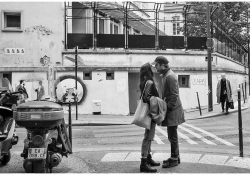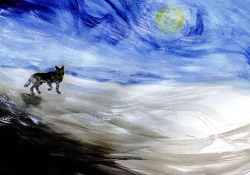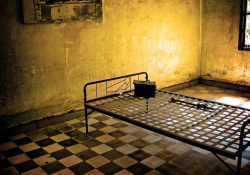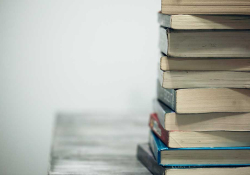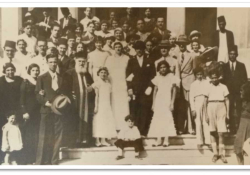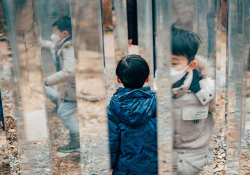100 Essential Books by Iranian Writers: Children’s and Young Adult Titles
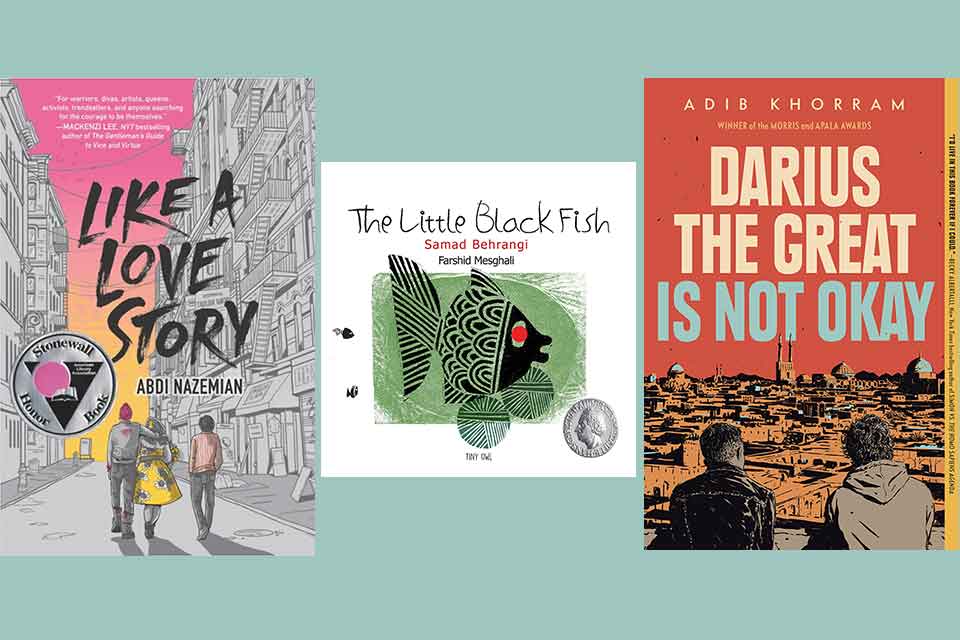
To mark the upcoming 2020 Neustadt Lit Fest and the announcement of the 2021 NSK Neustadt Prize for Children’s Literature, here is an excerpt featuring the children’s and young adult books selection from 100 Essential Books by Iranian Writers, curated by past Neustadt Prize juror, and WLT contributor, Niloufar Talebi. To read the full introduction and list, visit AAWW’s The Margins, where it was first published.
Two impulses led me to compile this list: to resist the forces that stifle the publication and distribution of literature created by Iranians and keep it off the world stage, and to celebrate the books that have reached readers of English.
The idea for this list originally came about as I raised these questions to myself:
What is this literature? What is (and is not) written and published inside Iran against pervasive state and self-censorship, cleverly reframed and filtered through tropes that elude the bureaucratic minefield and censors of the Ministry of Culture and Islamic Guidance? How and what can we, outside of Iran, with limited access, know of its diversity and aesthetic innovations? How do we overcome the barriers to international exchange? Are curators of the US book market willing to find ways to bring the creativity of literature in Iran to readers in translation?
Outside of Iran, what has been projected onto us by biased and often commodified productions, presentations, and consumption of our stories, that we in turn internalize—a different kind of censorship and self-censorship—and keep perpetuating in our literature? Are Iranians outside of Iran writing works against stereotypes enforced by the market that are not getting published? Can we write and publish beyond these stereotypes? Does this literature tend to repeat narratives whose fulcrum is always the 1979 Iranian revolution and historical events surrounding it that defined and disrupted our twentieth century? Is there value in that repetition—how World War II and Holocaust narratives are reinforced—or does it limit our imagination and output? Where is the fine balance between turning our historical realities into literature and escaping the manner in which that literature is cast?
This list resists the following circumstances—ones that literature written by Iranians inside and outside of Iran by authors of Iranian descent, in Persian, English, or any other language Iranian diasporic authors write in, faces to be available in English: suppression by the Shah’s regime before the 1979 Iranian revolution and the Islamic Republic after; the lack of Iranian government subsidies; the fact that Iran hasn’t signed the 1886 Berne Copyright Convention that protects literary and artistic works by providing creators with the means to control how their works are used, by whom, and on what terms, and because there’s no copyright treaty between Iran and the US, works by Iranian authors first published in Iran fall immediately into the public domain in the United States; sanctions that limit legal pathways for giving Iranian authors any compensation, or exporting any service to Iran, paid or not; the general limited interest in translated works as well as availability of translators; and productions that appropriate, commodify, frame and reframe, or sensationalize this literature, thereby raising Western readers that will only seek to understand the East through those lenses.
This list also celebrates that, despite challenges—which only show just how much further we can go to champion this literature—the abundance of literature by writers of Iranian descent, both at home in Iran and abroad, available in English is astonishing. Waves of migration out of Iran since 1979 have effectively resulted in the formation of a new literature. Since this list is a tip of the iceberg of the growing body of works by this subset, it is fair to assume that there is a significant body of literature here to warrant a major category and literary tradition of its own that contributes to the canon of world literature, however that canon is defined, its native environment the world itself.
I embarked on this list with an assumption of scarcity. But during the research process, I discovered an embarrassment of riches and came to realize that what has always made this literature seem peripheralized to me is not in the quality or quantity of available works, but in their positioning—as a literature of other. Iranians at home and abroad have tended to look to cultural institutions and discourses of the West for validation of their writings and identity. And the West has largely failed us while enjoying its self-made and -maintained privilege. But the West’s marginalization comes with a gift: we must (re)center ourselves. I hope that this list helps to deliver us from our search for Western validation and urge us toward active self-regard, solidarity, and authority. Toward fiercely championing and lifting our own compatriots and work, on our own terms, to the world.
This list is by no means comprehensive. It includes books written inside and outside Iran by authors of Iranian descent, in Persian, English, or any other language Iranian diasporic authors write in, and available in English. It omits theatrical, journalistic, sociological, and scholarly works. For the most part, these books have been published between 2000 and 2020. Many of the authors listed have written several books but are listed by one title to allow this list to contain as many different writers as possible. The numbers on this list do not indicate rank. Each category is sorted by publication date.
To read the full introduction and list of 100 Essential Books by Iranian Writers, visit AAWW.
Highlights
Children’s Books (1–5)
- The Little Black Fish, by Samad Behrangi, translated from the Persian by Azita Rassi, with the illustrations of the original illustrator, Farshid Mesghali, who won several awards for them including the Hans Christian Andersen Award in 1974 (Tiny Owl Publishing; translation edition, 2019). Samad Behrangi was a teacher, folklorist, translator, and short story writer of Iranian Azerbaijani origin who taught in the rural areas of Azerbaijan, familiarizing villagers and children with books. He wrote pedagogical essays and collected Azerbaijani oral literature. Behrangi’s other stories include the Ulduz stories, Talkhoon, and One Peach, One Thousand Peaches. He is most well known for his 1968 work, The Little Black Fish, a story for all ages, recognized as an allegory for children to explore the world and discover truth for themselves. What happens when you swim against the current? That’s the question at the heart of this book, which follows the little black fish on a journey from his stream to the sea. The story is made more poignant by the fact that it was written in the 1960s as an allegory for daring to hold different political views by an author whose early death was laid at the door of the regime. The Little Black Fish has been translated into several other languages.
- Saffron Ice Cream, by Rashin Kheiriyeh (Scholastic, 2018). With eighty published books under her belt, illustrations for the New York Times, as well as a scroll of other achievements, Rashin Kheiriyeh reveals a snippet of her own life in Saffron Ice Cream. Through bright oil and acrylic paints on handmade paper, she tells two stories of a day at the beach: in the American tale, the young girl overcomes her sadness of not finding saffron ice cream and learns to embrace chocolate crunch. Kheiriyeh worked as the character artist of the most popular Iranian animation series called Sugarland / Shekarestan for national TV in Iran. She won the 2017 Sendak Fellowship and was the winner of the New Horizon Award at the Bologna Book Fair. “With her colorful, exuberant folk-art illustrations and upbeat, friendly tone, Rashin makes a daunting cross-cultural leap seem as easy as a summer breeze” (New York Times Book Review).
- The Conference of the Birds, by Alexis York Lumbard, illustrated by Demi, with a foreword by Seyyed Hossein Nasr (Wisdom Tales, 2012). Lavishly illustrated by award-winning illustrator Demi, this magical and inspiring story of the adventures of a flock of wayfaring birds in search of their king will delight children with its tales of overcoming fear, physical hardship, and inner limitations. Based on an 800-year-old classical parable by the Persian poet Fariddudin Attar, and retold by mother of three Alexis York Lumbard, it will provide parents with a unique opportunity to teach moral and spiritual development to their children. In the original allegorical poem, the birds of the world gather to choose their sovereign. The wisest of them, the hoopoe (a bird often associated with King Solomon of the Bible), suggests they seek the legendary and mythical bird, Simorgh, who lives in the mountain at the edge of the world, then leads the birds—each of whom represents a different flaw that prevents humankind from attaining enlightenment—through seven valleys in order to reach the Simorgh. They learn the journey is not simple, and on the way many of the birds drop out or die, only thirty of them arriving at the realm of the Simorgh. The word “Simorgh” in the Persian means thirty (si) birds (morgh). The lesson they learn is that they themselves are the Simorgh.
This version is adapted for children 4–8 years of age in both prose and verse.
- Shahnameh for Kids – The Bravery of Gordafarid, by Arsia Rozegar, illustrated by Mike Amante (Shahnameh for Kids, 2020). When the brash warrior Sohraub and his army lay siege to the White Fortress, it’s up to a lone heroine known as Gordafarid to find the courage to defend her people. Will she have what it takes to stop the mighty Sohraub? An empowering ancient Persian tale inspired by Ferdowsi’s tenth-century epic poem, The Shahnameh. Rozegar and Amante have also authored The Story of Zal & Simorgh, The Mighty Rostam, and The Shahnameh Coloring & Activity Book.
- Persia Blues Book Series, by Dara Naraghi and illustrator Brent Bowman: Leaving Home (Persia Blues #1) (NBM Publishing, 2013), and Love and War (Persia Blues #2) (NBM Publishing, 2015). The Persia Blues Book Series was nominated for the Great Graphic Novels for Teens 2014 award by the Young Adult Library Services Association. In the first volume, Minoo Shirazi is a rebellious young Iranian woman struggling to define herself amid the strict social conventions of an oppressive regime and the wishes of an overbearing father. She is also a free-spirited adventurer in a fantasy world, a place where aspects of modern America and ancient Persia meld into a unique landscape. Persia Blues explores the intersections of guilt and freedom, family and self, ancient myths and modern enigmas.
In the second book, Minoo Shirazi’s mysterious double-life continues to unfold across two thousand years of history. In the fantastical world of ancient Persia, the shock of discovering her royal heritage is overshadowed by the imminent invasion of Ahriman’s armies. Only by finding the empire’s champion, Rostam, can she hope to turn back the tide of evil. While in the modern world, Minoo’s life in Iran and America—where she has recently begun her graduate studies—deals with her stern father, dying mother, lost brother, and new American boyfriend. Across myths and modern realities, we delve deeper into the truth of Minoo’s life.
Naraghi is also the author of other notable graphic novels including Lifelike, Terminator: Salvation, and Witch & Wizard: Battle for Shadowland.
Young Adult Books (6–10)
- Down and Across, by Arvin Ahmadi (Penguin Books; reprint edition, May 2019). Scott Ferdowsi is at a pivotal moment in his life when he runs away to seek guidance from a famous psychologist who claims to know the secret to success and meets a woman whose life ambition is to write crossword puzzles, which sets him on adventures he could never have dreamed of.
- Here to Stay, by Sara Farizan (Algonquin Young Readers, 2019). A Booklist Top 10 Sports Book for Youth 2018, this book is about what happens after Bijan Majidi gets pulled off the bench to make the winning basket in a varsity playoff, but then a school cyberbully sends an anonymous photo making him look like a terrorist. Sara Farizan’s debut novel, If You Could Be Mine (a Rolling Stone 40 Best YA Novel), tells the story of a young girl in Iran who falls deeply in love with her best friend. In her second novel, Tell Me Again How a Crush Should Feel, the main character struggles to fit in as an immigrant and as a queer teen. Farizan won the Lambda Literary Award for LGBT Children’s/Young Adult fiction.
- Darius the Great Is Not Okay, by Adib Khorram (Penguin Books; reprint edition, 2019). One of Time’s 10 Best Young Adult and Children’s Books of the Year, this book about grappling with mental illness, identity, and one’s place in the world is for anyone who’s ever felt not good enough but meets a friend who makes them feel so much better.
- Americanized: Rebel Without a Green Card, by Sara Saedi (Ember; reprint edition 2019). A TV writer, Emmy winner, and now a young adult novelist, through humor and brutal honesty, Sara Saedi tells the story of being undocumented in America. A toddler when her family moved from Iran after the revolution, it wasn’t until she was thirteen that Sara learned that she was undocumented, which didn’t mean she wasn’t still a teenager obsessed with all things pop culture and whether she would be the only one without a prom date. The book is in development as a television series from Reese Witherspoon’s Hello Sunshine production company and ABC studios.
- Like a Love Story, by Abdi Nazemian (Balzer + Bray, 2019). This book about friendship and the courage of coming out is called “a love letter to queerness.” In 1989, Reza is a teenager in New York. He knows he’s gay, but all he knows of gay life are the media’s images of men dying of AIDS. He starts dating Judy but struggles to find a way out of his deception that won’t break Judy’s heart—and destroy the most meaningful friendship he’s ever known. Nazemian is also the author of The Walk-In Closet, which won the Lambda Literary Award for LGBT Debut Fiction, and The Authentics.
Introduction and list © 2020
By Niloufar Talebi

